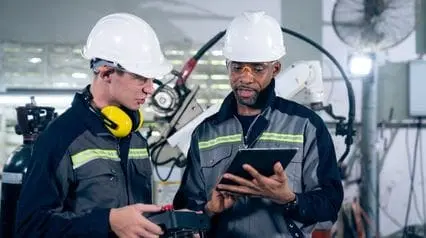What is Maintenance Training?
Maintenance training refers to learning and upskilling tasks to better inform and equip maintenance workers with the necessary skills for their jobs. It involves seminars, learning materials, meetings, and hands-on training sessions.
Importance
Maintenance training is an important part of any business, particularly in ensuring workplace safety and equipment efficiency and condition. Before properly performing maintenance tasks, training is essential to make sure your employees are aware of the right safety procedures before, during, and after work. Regular maintenance training also helps ensure that workers are updated on any possible changes in practices.
Regular maintenance training also helps with the following:
- Improving productivity in the workplace
- Encouraging employees to work faster and respond quicker
- Reduced cost on issues caused by improper maintenance practices from lack of training or outsourcing workers
- Increasing the lifespan of your equipment with the right maintenance procedures
- Lessening the chances of injuries from improper or unsafe maintenance practices
Types of Maintenance Training
There are four main types of maintenance, namely routine or preventive, planned, corrective, and predictive maintenance. Following this, there are different maintenance training tasks associated with each one.
Routine or Preventive Maintenance Training
For this type of maintenance, common training plans include doing the following:
- Conducting regular training sessions on repair work for equipment that needs routine maintenance
- Orienting workers on how to spot signs of damage, wear and tear, and potential issues
- Practicing safety procedures and emergency practices to follow
Planned Maintenance Training
Training for planned maintenance is almost the same as training for routine or preventive maintenance tasks. However, since planned maintenance is more time-consuming, the training needed for it can be more complex depending on the situation and equipment to be maintained.
Corrective Maintenance Training
Corrective maintenance training has some differences from the other types of maintenance training since it deals with fixing issues as they happen or after. Training for corrective maintenance includes:
- Learning troubleshooting skills for diagnosing issues accurately and quickly
- Practicing techniques for swift repairs to minimize downtime
- Replacing damaged or worn-out components quickly and efficiently
- Communicating to coordinate responses during breakdowns
Predictive Maintenance Training
Compared to the other types of maintenance training, predictive maintenance is often more focused on how to determine the appropriate schedule for planned and corrective maintenance to avoid issues or predict their possibilities. Training for this type of maintenance typically includes the following:
- Understanding the data generated by sensors and monitoring tools
- Interpreting data to predict when maintenance is needed
- Learning how to use the equipment and software for data collection
- Creating reports and sharing findings with relevant stakeholders
Uses for Maintenance Training
Maintenance training is necessary for all fields that require maintenance for their assets and equipment. Common uses for maintenance training include:
- Building maintenance
- Facilities maintenance
- Aviation maintenance
- Forklift maintenance
- Elevator maintenance
- Vehicle maintenance
- Computer and IT maintenance
What to Include in a Maintenance Training Course
Each maintenance training course will differ depending on the industry, need, and resources available. However, an ideal maintenance training program should have the following:
- Clear schedule of when training should be held
- Plan for who will manage the training program
- Lesson plan suited to your workers’ needs and the work environment
- Supplementary materials for workers to do further or additional study
It is important to be aware that each worker has different needs and responsibilities that need to be considered during the training program. It is very likely that, in some cases, not all workers may be able to attend or learn at the same pace as others. In order to best accommodate everyone and their needs, it would be best to have a digital solution to help you out.
A digital training platform allows for more flexibility in training courses, as well as in completing them. It provides resources for workers on the go, as well as encourages them to learn in ways that are engaging and easy to track with analytics.




